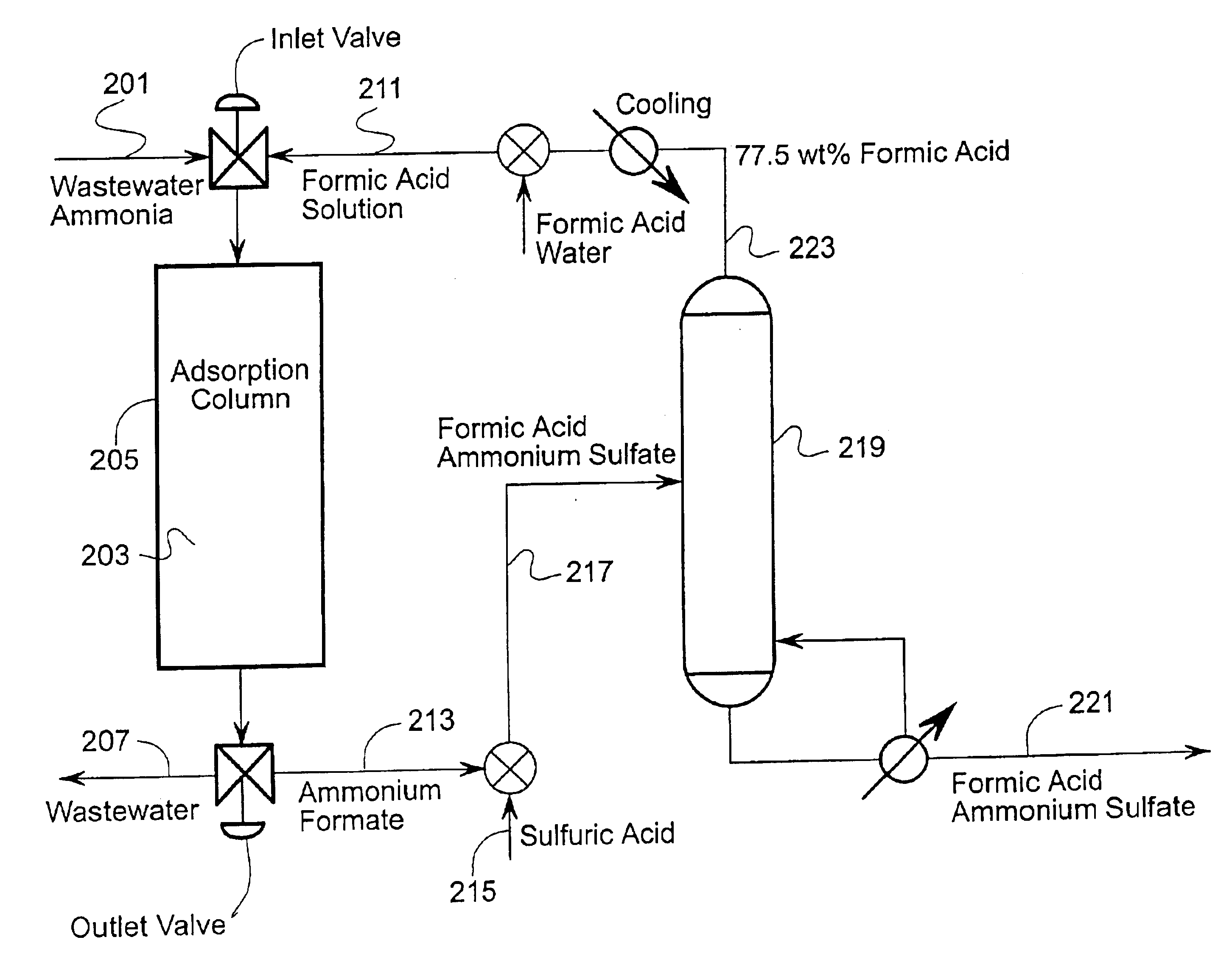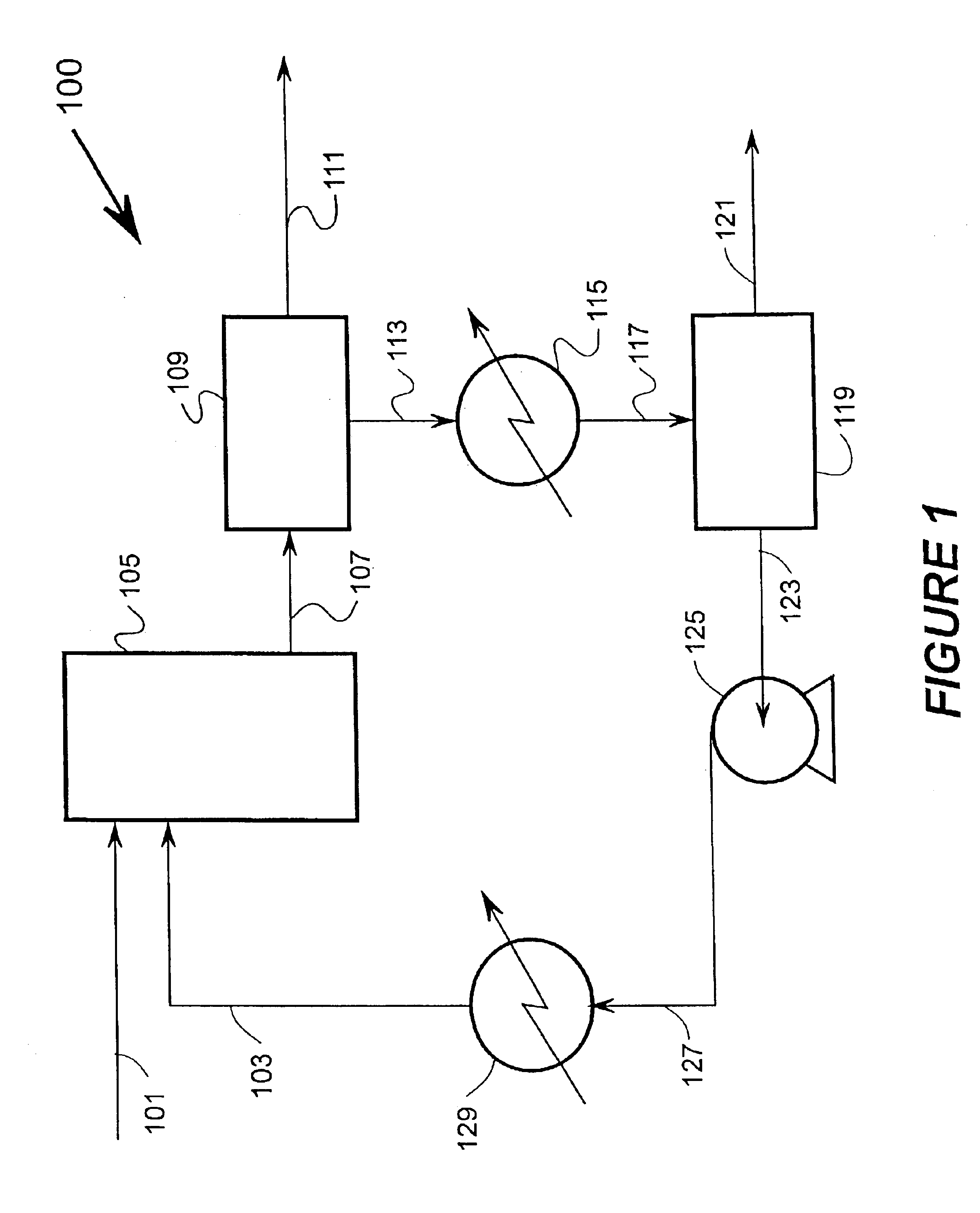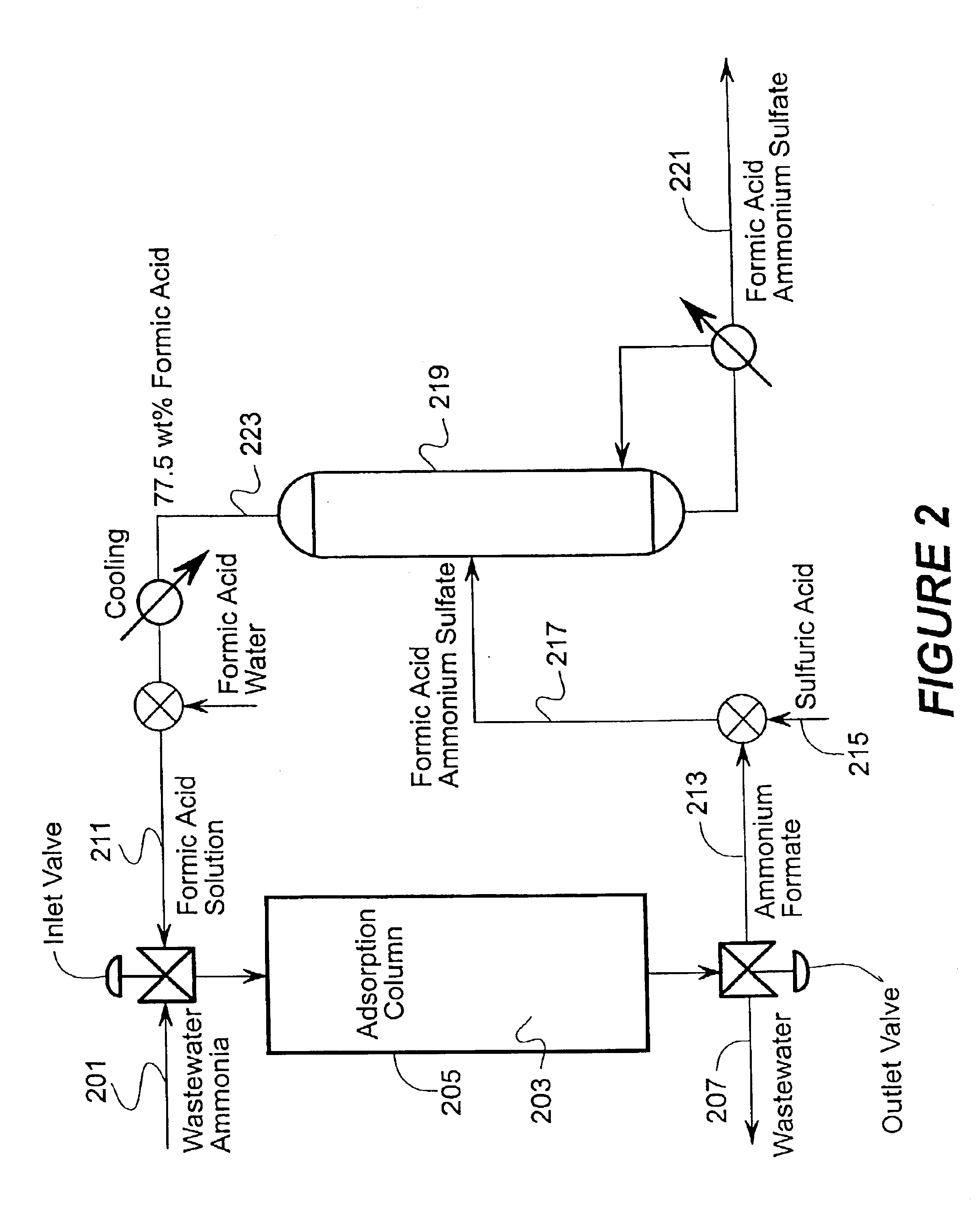Apparatus and method for ammonia removal from waste streams
a technology of ammonia removal and ammonia filter, which is applied in the direction of combustible gas purification/modification, water/sewage treatment by ion exchange, nuclear engineering, etc. it can solve the problems of ineffective dilute hydrochloric acid and dilute sulfuric acid, failed to prove an effective regeneration agent, and none of these techniques have apparently been commercialized. , to achieve the effect of more economical
- Summary
- Abstract
- Description
- Claims
- Application Information
AI Technical Summary
Benefits of technology
Problems solved by technology
Method used
Image
Examples
embodiment
I. First General Embodiment
Broadly the invention includes methods, materials, and apparatus for removing ammonia from fluid streams. The fluid streams include gaseous and liquid streams. When gaseous streams are used the ammonia from the gaseous stream is first extracted into a liquid stream and then extracted from the liquid stream.
Two main embodiments for ammonia recovery are disclosed herein. The first uses zinc hydroxide for contacting a fluid stream and the second uses a metal loaded ion exchange medium for contacting the fluid stream. Both embodiments are able to reversibly bind ammonia so that overall costs for the methods are reduced. For example, a zinc hydroxide slurry can absorb ammonia from a fluid stream. The zinc hydroxide ammonia reaction can be reversed at higher temperatures or under vacuum to produce a wet ammonia gas stream, or with contact with a weak acid; a metal loaded ion exchange medium can also be used for ammonia recovery with reversal of the reaction by t...
example 1a
This example demonstrates that the ammonia adsorption is dependent both upon the type of resin to which the ammonia binding metal is adsorbed and the process by which the metal is adsorbed to the resin. Four resins were examined. Dowex™ 50WX2-400, Dowex™ 50WX2-100, and Dowex™ 50WX8-400 are all strong acid ion exchange resins with a microporous styrene / DVB matrix structure with sulfonic functional groups, produced by The Dow Chemical Company (Midland, Mich.). Dowex™ 50WX2-400 has 200-400 mesh particle sizes with 2% crosslinking. Dowex™ 50WX2-100 has 50-100 mesh particle sizes with 2% crosslinking. Dowex™ 50WX8-400 has 200-400 mesh particle sizes with 8% crosslinking. The Duolite™ ES-467 resin is a weakly acidic ion exchange resin with a macroporous polystyrene / DVB matrix structure with amino-phosphonic functional groups and particle sizes of 16-50 mesh. Before loading with Zn, all four resins were washed three or four times with deionized water.
In a first case, washed Dowex™ 50WX2-40...
example 2a
This example demonstrates that ammonia may be absorbed to a metal hydroxide adsorbent, and that the degree is dependent on the conditions under which the hydroxide is formed. Three different contacting schemes were examined. In the first case, the insoluble Zn(OH)2 precipitate was formed in the presence of ammonia. In the second case, the insoluble Zn(OH)2 precipitate was formed in solution and then the ammonia was added to the solution. In the third case, the insoluble Zn(OH)2 precipitate was formed, recovered by filtration, washed, and then added to an ammonia solution.
In a first case, 100 ml of 100 ppm NH3 was prepared by adding 10 ml of 1000 ppm NH3 stock solution prepared from NH4Cl to 90 ml of deionized water. This solution was kept mixing using a magnetic stir bar and a magnetic stirrer while 0.7990 g of ZnCl2 was added. Upon the addition of the ZnCl2, the slight formation of Zn(OH)2 was observed. The pH of the solution was then raised to 9.3 using 9.162 ml of 1 M NaOH. As th...
PUM
| Property | Measurement | Unit |
|---|---|---|
| pKa | aaaaa | aaaaa |
| pKa | aaaaa | aaaaa |
| pka | aaaaa | aaaaa |
Abstract
Description
Claims
Application Information
 Login to View More
Login to View More - R&D
- Intellectual Property
- Life Sciences
- Materials
- Tech Scout
- Unparalleled Data Quality
- Higher Quality Content
- 60% Fewer Hallucinations
Browse by: Latest US Patents, China's latest patents, Technical Efficacy Thesaurus, Application Domain, Technology Topic, Popular Technical Reports.
© 2025 PatSnap. All rights reserved.Legal|Privacy policy|Modern Slavery Act Transparency Statement|Sitemap|About US| Contact US: help@patsnap.com



